A big ball of dippable, spreadable cheese, mixed or rolled with a plethora of ingredients? Sounds satisfying indeed. Cheese balls were thought to have been invented in the 1800s in the US, but historic recipes dating back to the Roman Era say otherwise. Here, this recipe for a cheese ball shows that cheese has been loved — no borders of a country nor different eras of history could stop a passionate liking for cheese balls. Is it worth recreating? You’ll have to read to see.
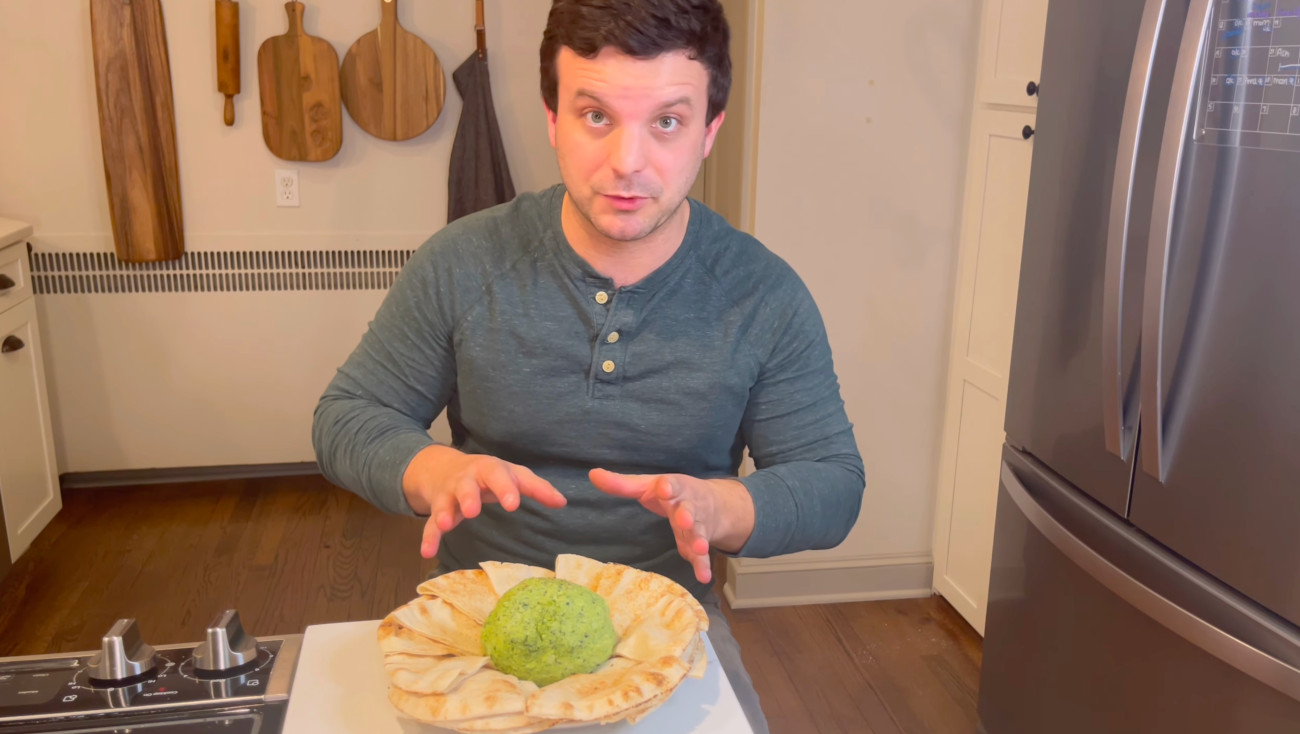
Not everything from the Roman Era translates as tasty for modern-day palates. The potent condiment called garum or Roman meat cooking techniques (which essentially boiled down to finding an exotic animal, stuffing it with another animal or spices, and seasoning liberally with honey) doesn’t always rank as a must-make food for the modern-day cook. However, this cheese ball may break the odd reputation of Ancient Roman cuisine. The Time Traveling Chef shows that historical food can taste good.
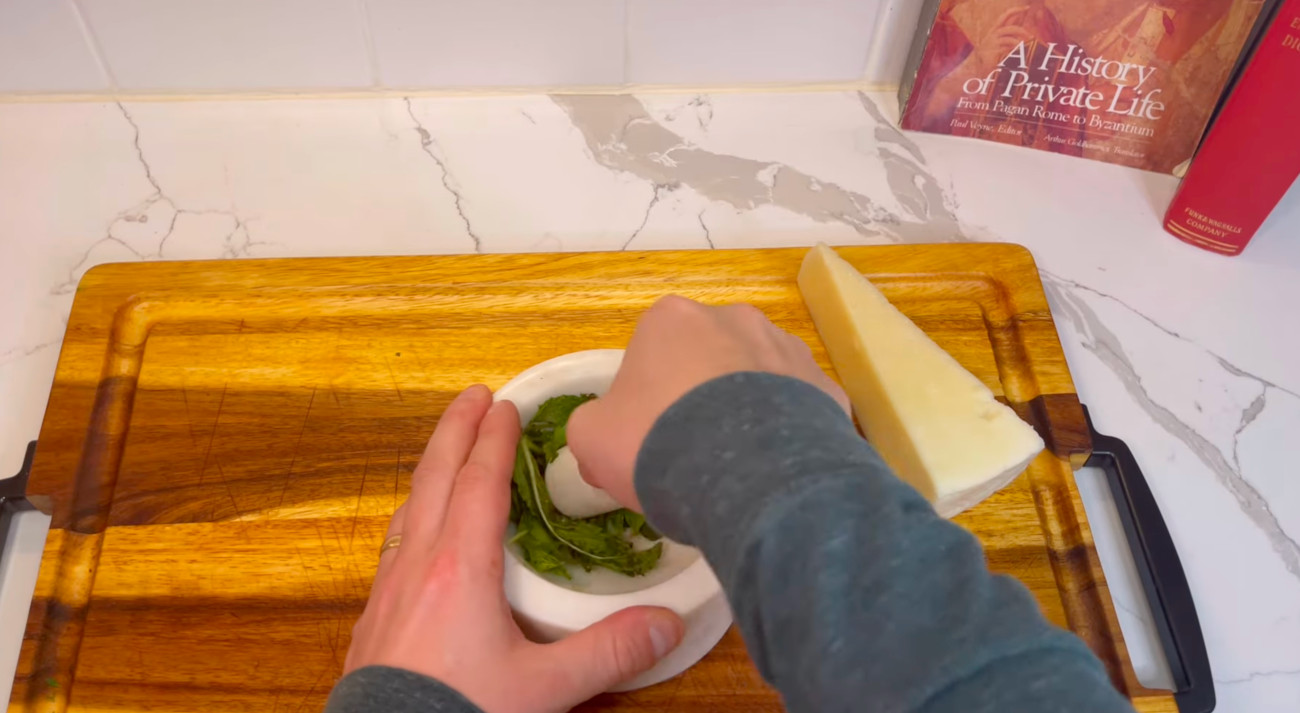
Just like the cheese ball of today, the cheese ball of Ancient Rome was something to be shared during events and parties. When looking at the name of the Roman cheese ball, momentum, it does little to describe the qualities of the dish. It’s said to be a salad, but it is not a salad by any modern concept or standard.
This so-called salad is made by crushing herbs, garlic, and cheese into a paste, smoothed into a ball shape, and presented with any sort of bread for dipping.
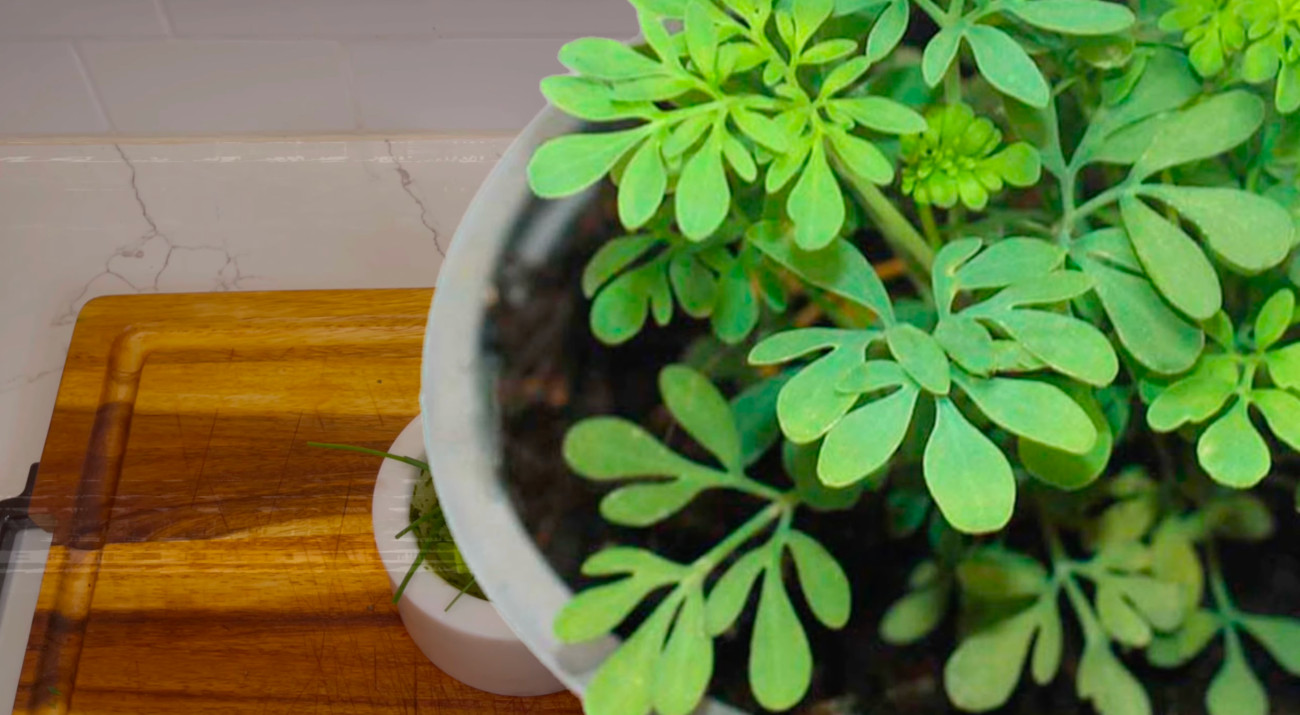
This cheese ball had a plethora of green herby ingredients — dandelion, thyme, arugula, chives, mint, fresh coriander leaves, and parsley ground with peppercorns. Traditionally many recipes called for an herb called rue, which is toxic and unsafe to consume, and should be omitted today. You may think that an ingredient like mint would be weird with cheese, but it doesn’t clash. The mint provides the eater with a whiff of freshness, countering against the heavier and stronger tasting herbs.
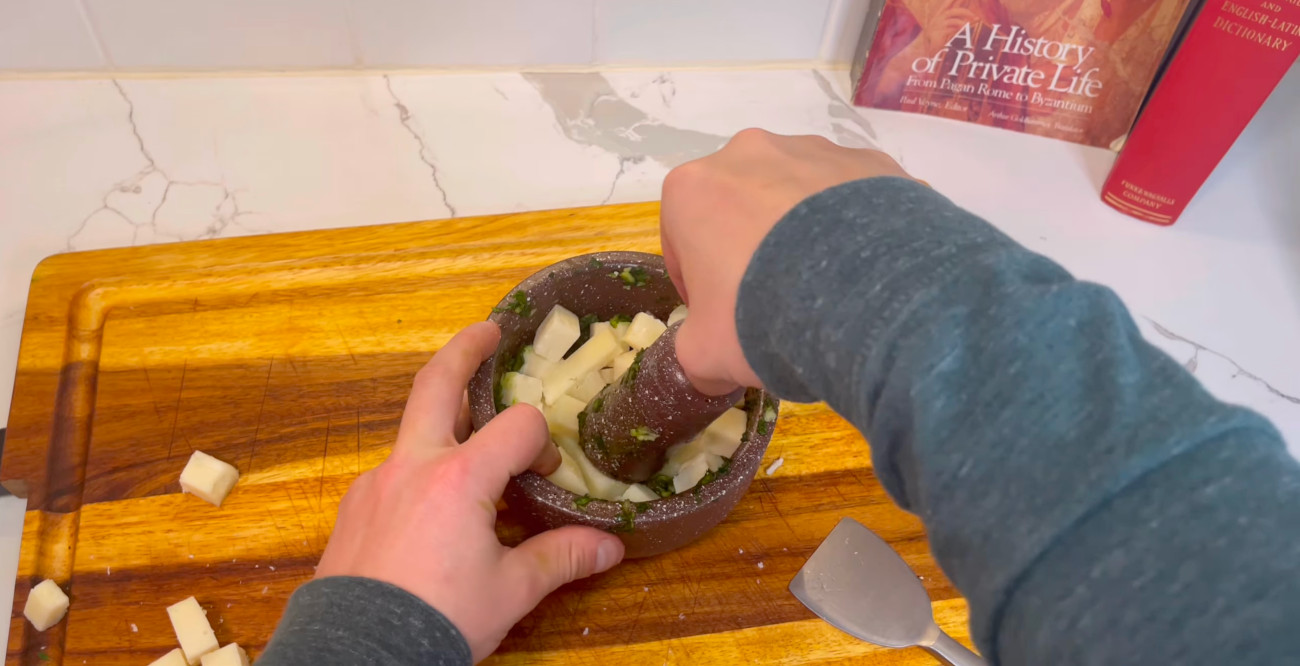
Grinding pecorino Romano cheese into the garlic and herb mixture takes a bit of elbow grease, but it’ll break down in a matter of minutes.
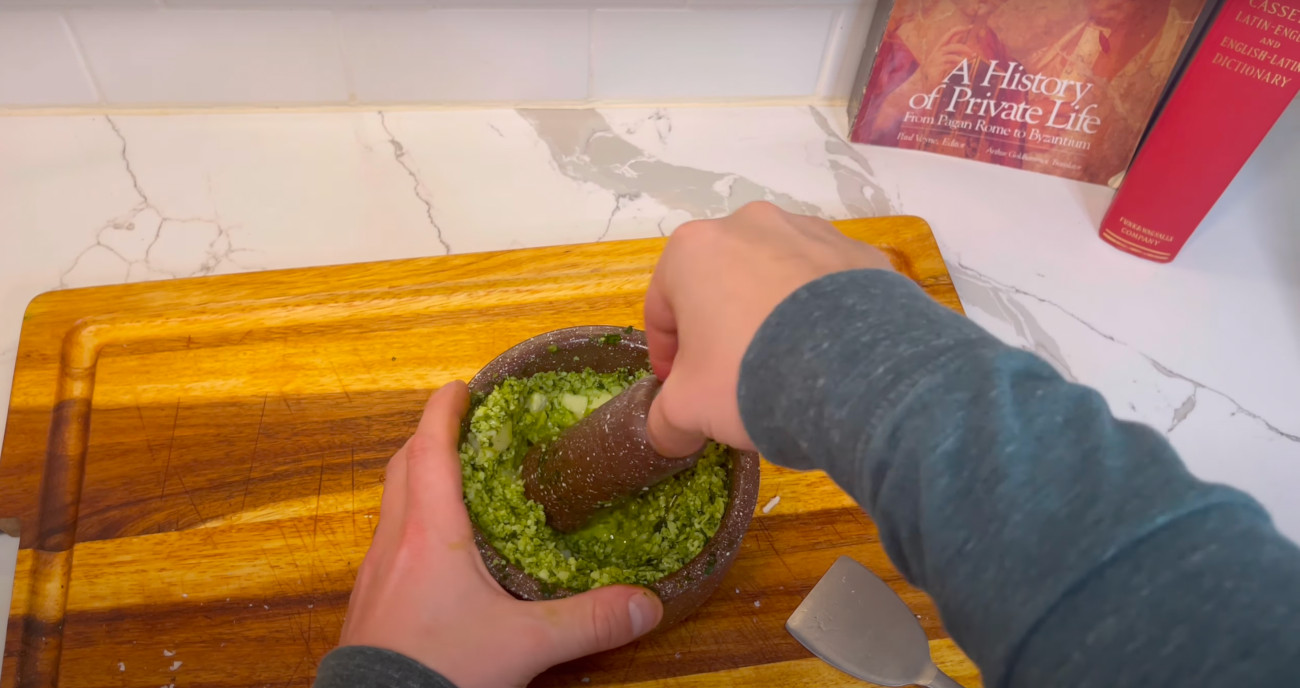
At this point, the cheese ball will look like pesto, kind of rough or gritty in texture, but this is expected.
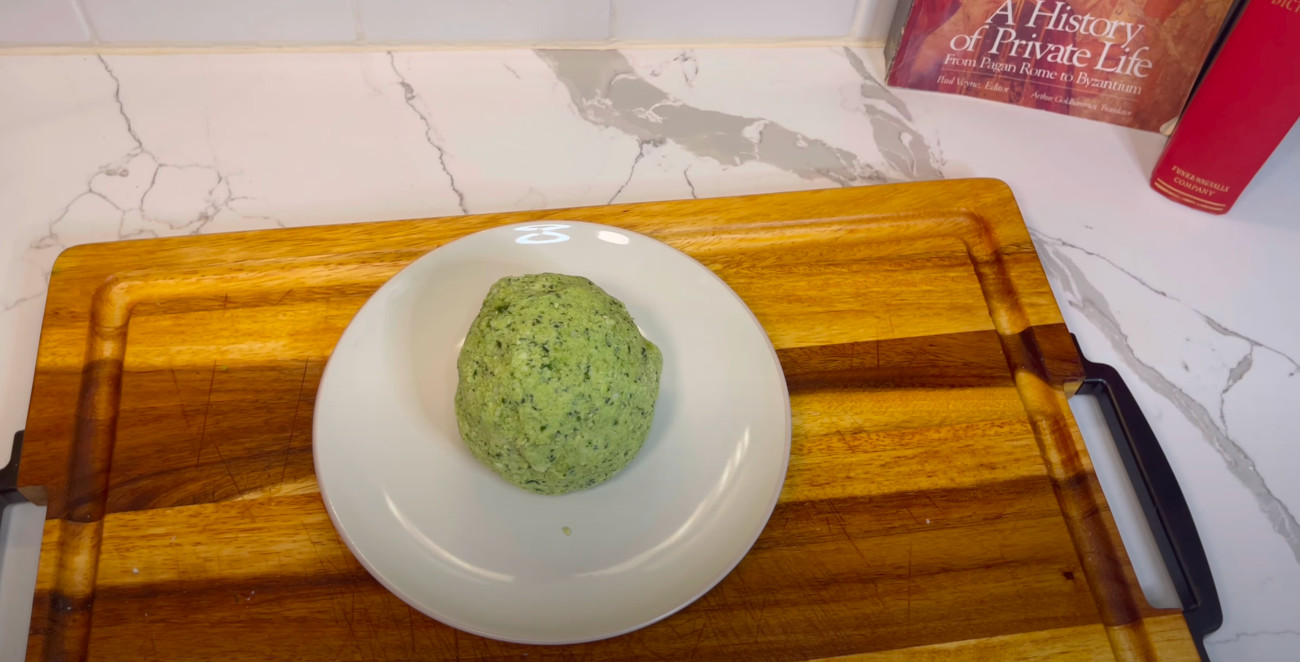
The addition of ricotta cheese, olive oil, and a bit of vinegar smooths out the whole mixture, creating a creamy dippable cheese ball that we’re all familiar with today.
To watch the full start-to-finish process, watch the video below.













